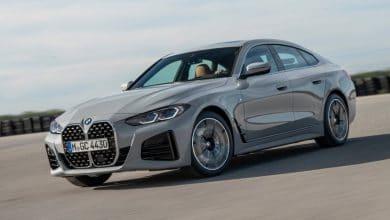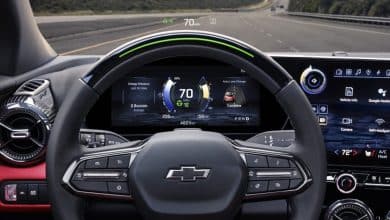Rivian will use Tesla’s NACS port and charging network

A trend is being created with American manufacturers. While Tesla was the only one to use the charging port now called NACS (North American Charging Standard), it was joined by Ford, then GM in recent weeks. And now it’s the turn of Rivian to follow suit, in addition to confirming that its vehicles will be able to use the Californian company’s charging network from the spring of 2024.
The announcement was made by press release, through the company’s website, and on various social media pages on Tuesday morning. It read that an agreement had just been signed with Tesla to use the NACS charging port. An adapter will be available for the current Rivian R1T and R1S, while the manufacturer’s future R2 range vehicles, as well as R1 range vehicles from 2025, will be equipped with the NACS port as standard.

The charging network
Also integral to this agreement is access to Tesla’s Supercharger network for Rivian vehicles. As for Ford and GM, it concerns 12,000 Tesla charging stations widespread in both the United States and Canada. Rivian vehicles will be able to access it as early as spring 2024, according to the manufacturer.
This accessibility is in addition to that which Rivian already offers with its proprietary network, called Rivian Adventure Network, which it is in the process of deploying, among other places, in various national parks across North America. Since the arrival of its vehicles, Rivian has committed to installing charging stations in certain places that it claims will be frequented by its consumers.

A must?
This recent news seems to give the NACS port a renewed relevance compared to the ports currently used by electric vehicles. Indeed, the CHAdeMO port is losing momentum and is gradually being abandoned by Nissan, one of the only ones who wanted it, and the CCS-Combo port is criticized by some people because of its size and its weight which make it difficult to manipulate.
Moreover, Stellantis has announced that it is evaluating the adoption of this NACS charging port popularized by Tesla, while Hyundai has not closed the door to its use in the more or less near future either.

Conclusion
The accessibility of the charging stations installed by Tesla is good news for electromobilists, who often encounter charging difficulties when they leave Quebec. This is particularly the case in certain Canadian provinces, or even in the vast majority of American states. Having access to a reliable and efficient charging network is one of the keys to the mass adoption of electric vehicles.
Furthermore, the use of the NACS port is also good news, considering that it is lighter and smaller than the other options currently available. Its handling is therefore simpler. If we can, as in Tesla vehicles, combine this novelty with the “Plug and Charge” functionality, which means that the vehicle takes care of paying the operator directly without the electric motorist having to do anything other than plug in the vehicle, it would make the experience even smoother for users.











